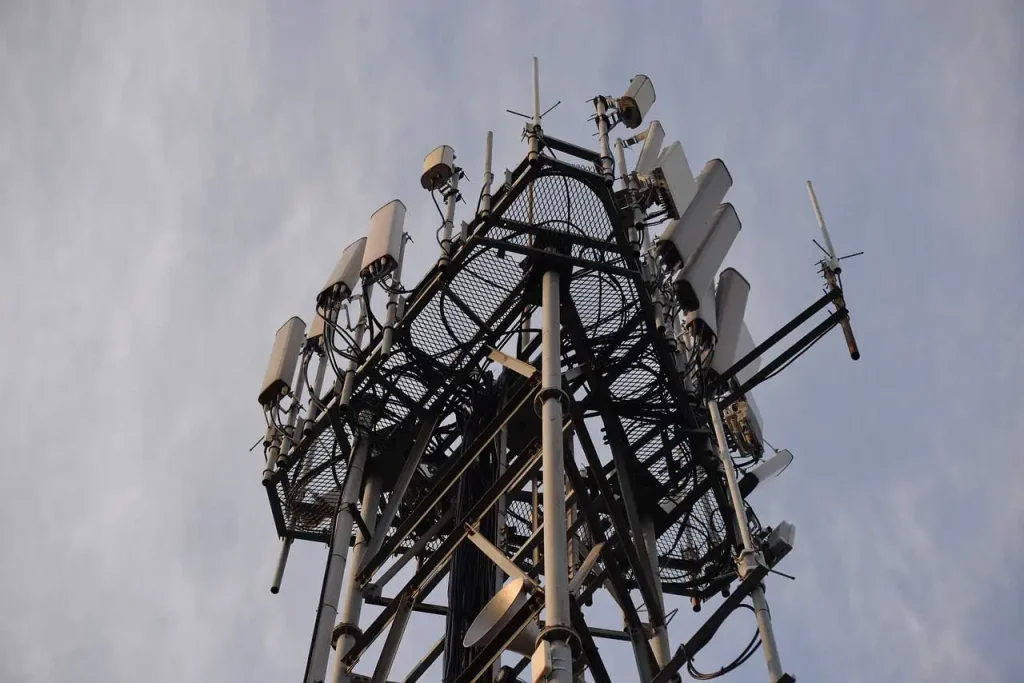Introduction
In the contemporary digital landscape, characterized by an insatiable appetite for connectivity and speed, 5G technology stands poised to redefine the boundaries of what’s possible. This fifth-generation wireless technology represents a quantum leap forward, promising not only faster download speeds but also ultra-low latency and massive connectivity. Let’s embark on a detailed exploration of the transformative potential of 5G and the power of 5G technology, delving into its key features, applications across various sectors, as well as the opportunities and challenges it presents.
Key Features of 5G Technology:
a. Ultra-Fast Speeds: The cornerstone of 5G technology lies in its ability to deliver unprecedented speeds, with theoretical download speeds reaching up to 20 gigabits per second (Gbps). Such blazing-fast connectivity ensures that tasks that once took minutes, like downloading high-definition movies or large datasets, can now be completed in a matter of seconds, transforming the way we consume and interact with digital content.
b. Ultra-Low Latency: Power of 5G technology can facilitate ultra-low latency, measured in milliseconds, significantly reduces the time it takes for data to travel between devices and the network. This near-instantaneous responsiveness is crucial for applications that demand real-time communication, such as autonomous vehicles, remote surgery, and immersive gaming experiences, where even the slightest delay can have profound implications for safety and user experience.
c. Massive Connectivity: With the proliferation of connected devices in the Internet of Things (IoT) era, 5G rises to the challenge by supporting a massive number of simultaneous connections. Through advanced techniques like network slicing and beamforming, 5G networks can efficiently allocate resources and optimize coverage, laying the groundwork for interconnected smart cities, industrial automation, and sensor networks. Power of 5G technology can facilitate mass connectivity in an innovative way with low latency.
Applications and Use Cases:
a. Augmented Reality (AR) and Virtual Reality (VR): 5G unlocks the full potential of AR and VR experiences by providing the high bandwidth and low latency required for seamless immersion. From interactive gaming and virtual tours to remote collaboration and training simulations, 5G enables users to transcend physical limitations and explore new realms of possibility.
b. Remote Healthcare: Telemedicine and remote patient monitoring stand to benefit immensely from 5G’s capabilities, enabling healthcare providers to deliver high-quality care regardless of geographical barriers. Real-time consultations, medical diagnostics, and even surgical procedures can be conducted with greater precision and efficiency, enhancing patient outcomes and reducing healthcare costs.
c. Smart Infrastructure: 5G plays a pivotal role in building smarter, more efficient cities and infrastructure. By powering applications such as traffic management, energy optimization, and environmental monitoring, 5G enables municipalities and businesses to improve resource allocation, reduce congestion, and mitigate environmental impact, ultimately enhancing quality of life for residents.
d. Industrial Automation: In the realm of manufacturing and logistics, 5G facilitates the transition towards Industry 4.0 by enabling real-time monitoring, predictive maintenance, and autonomous systems. By connecting machines, sensors, and devices on the factory floor, 5G drives efficiency, agility, and innovation, empowering businesses to stay competitive in an increasingly digitized world.
e. Entertainment and Media: From streaming high-definition content on-the-go to personalized advertising and interactive experiences, 5G revolutionizes entertainment and media consumption. With its enhanced streaming quality and seamless connectivity, 5G enables content creators and distributors to captivate audiences in new and immersive ways, transforming the entertainment landscape.
Related: Mobile App Development Services
Opportunities and Benefits:
a. Innovation and Economic Growth: The deployment of 5G technology heralds a new era of innovation across industries, driving economic growth, creating jobs, and fuelling entrepreneurship. By providing the foundation for groundbreaking applications and services, 5G empowers businesses to unlock new revenue streams and deliver value to customers in ways previously unimaginable.
b. Enhanced Productivity and Efficiency: Businesses leverage 5G to streamline operations, optimize processes, and enhance productivity across the board. Whether it’s improving supply chain management, empowering remote workforces, or delivering superior customer experiences, 5G enables organizations to stay agile and responsive in an ever-changing business landscape.
c. Improved Quality of Life: Beyond its economic implications, 5G has the potential to significantly improve quality of life for individuals and communities. From remote education and telecommuting to smart healthcare and sustainable living, 5G fosters connectivity and accessibility, empowering people to lead healthier, more connected lives irrespective of geographical constraints.
d. Global Connectivity: By bridging the digital divide and expanding internet access to underserved communities, 5G fosters global connectivity and inclusivity. In regions where traditional infrastructure is lacking, 5G offers a lifeline, enabling individuals and businesses to participate in the digital economy, access essential services, and unlock new opportunities for growth and development.
Challenges and Considerations:
a. Infrastructure Deployment: The widespread deployment of 5G infrastructure requires substantial investment in network upgrades, small cell deployment, and spectrum allocation. Addressing logistical challenges and regulatory hurdles is essential to ensure the seamless rollout of 5G networks and maximize their potential impact.
b. Security and Privacy: With increased connectivity comes heightened concerns about cybersecurity threats, data privacy, and regulatory compliance. Safeguarding sensitive information and ensuring the integrity of 5G networks requires a comprehensive approach that addresses both technological and regulatory aspects of security.
c. Digital Divide: Ensuring equitable access to 5G networks remains a challenge, particularly in rural areas and underserved communities with limited connectivity. Bridging the digital divide requires collaboration between government, industry, and civil society to address infrastructure gaps, reduce barriers to access, and promote digital literacy. Power of 5G technology is way more than anticipated and that makes it important to expand its use of wide groups of people.
d. Regulatory Frameworks: Developing comprehensive regulatory frameworks is essential to address spectrum management, licensing, and spectrum sharing issues. By fostering a supportive regulatory environment that promotes competition, innovation, and consumer protection, policymakers can unlock the full potential of 5G and foster a thriving digital ecosystem.
e. Environmental Impact: The proliferation of 5G infrastructure raises concerns about energy consumption, electronic waste, and environmental sustainability. Deploying energy-efficient solutions, optimizing network design, and promoting responsible e-waste management are critical steps towards minimizing the environmental footprint of 5G technology and building a more sustainable future.
Conclusion
As we navigate the complexities of deploying and harnessing 5G technology, it’s evident with the power of 5G technology that the opportunities for innovation and growth are boundless. By embracing collaboration, innovation, and inclusivity, we can unlock the full potential of 5G and pave the way for a truly transformative digital revolution. From driving economic prosperity and improving quality of life to fostering global connectivity and sustainability, 5G has the power to reshape our world for the better, creating a brighter future for generations to come.









